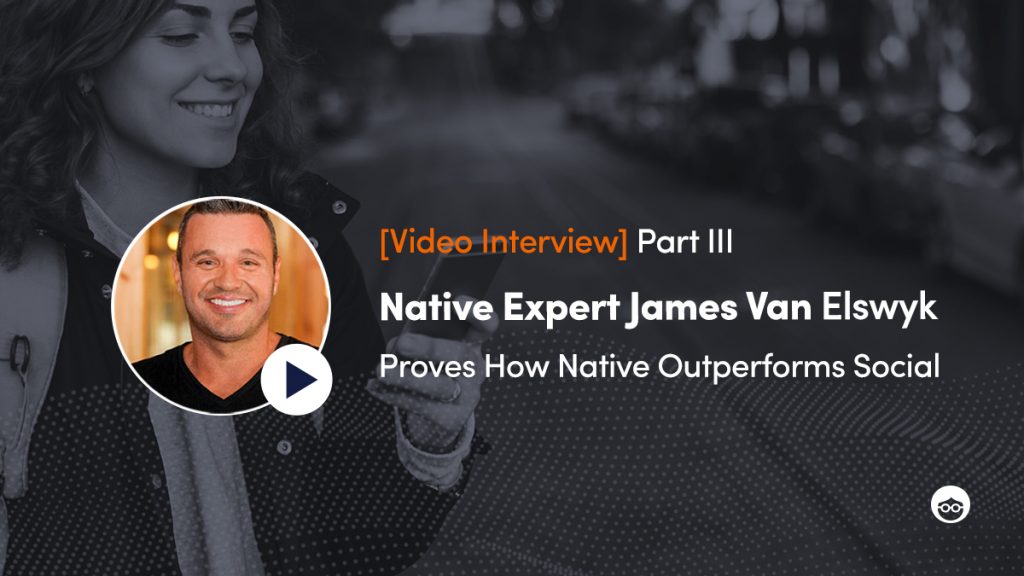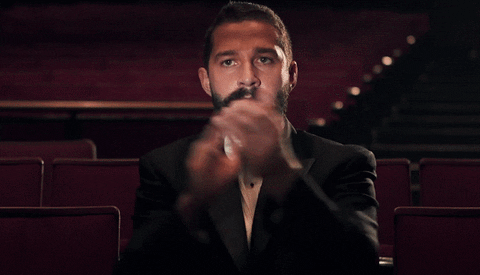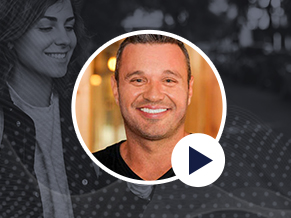[Video] Exclusive Interview With James Van Elswyk, Part 3: How Native Outperforms Social

Let’s face it — as Marketers (and Publishers!), we have a love-hate relationship with the triopoly that is Facebook, Google, and Amazon.
It’s true, they have significant scale — so much so that they make up over two-thirds of digital ad spend. Marketers have become reliant on these powerful platforms. But that’s just it, right? They have so much power that they’ve become overpowering.
Immense rates, unpredictable algorithm shifts, deceptive targeting practices. When does it end? Does it ever end?
In every article, at every event, in every marketing plan — there are always mentions of “channel diversification” and how important it is, though we’re not often seeing the budgets match those statements.
Well, James Van Elsywk is back, and more honest than ever in his third and final series edition, removing “love” from the “love-hate” relationship with the triopoly, and focusing on the one ad experience to rule them all: Native.
Buckle up — James is about to drop some advertising realness on all of us.
Missed the earlier editions? Don’t fret — play catch up here:
Q: When did you realize there was a greater opportunity with Native Ads, beyond your typical Facebook Ad campaigns?
TL;DR
Facebook burned James.
TS;WM
“I saw Native Ads, and saw the potential with the ad formats, and started to test it out. That eventually scaled up very, very strong.
I went back to Facebook to get even more reach… and then I had a crazy account ban situation, where my personal account and eleven of my employees’ accounts were removed from the Facebook platform — our personal profiles were removed from the Facebook platform. But our Business Manager, which we now couldn’t access from our personal profiles, was still spending.
And then once we were able to access the platform again thirty days later — which keep in mind, when you’re bounced out of Facebook on a personal level, it’s like being excluded or getting voted off the island. I had some employees who were pretty upset — all of a sudden all of your pictures are gone, you can’t communicate with your family — it’s just too much.
Once we got our accounts back there, I just said, “’Enough is enough — I’m going back and focusing on Native Ads.’”
Q: Facebook burn aside, how are you evaluating and spotting the best traffic sources as an Affiliate Marketer?
TL;DR
Look for three boxes to be checked: scale of traffic, quality of traffic, and consumer value.
TS;WM
“You have to take a look at what your end goal is.
Step one: how is the quality of the traffic and is there enough of it? When you’re looking at Outbrain or Taboola, the bigger platforms, you have the potential to spend six figures a day — it’s there if you want to, if you have an offer that works — you have that opportunity. These check that box.
Then, you take a look at the quality of the traffic — do I have to worry about a lot of fraud, do I have to worry about a lot of low-quality publishers? Again, with a major Native traffic source, you don’t have that problem — it’s high-quality traffic.
And the demographic that dominates on Native are people that have a good income, a good job — so the caliber of user of Native Ads is really as good as any.
When you’re evaluating a traffic source: is there enough traffic, is it good quality traffic, and how is the value of the user? Native Advertising checks all of those boxes.”
Q: Performance Marketers are used to quick-win results given the power of the duopoly. What expectations should Marketers have when testing Native Ads?
TL;DR
Native takes a little more time, though leads to increased, stabilized profitability.
TS;WM
“100%, things don’t start working as fast — although, I recently have an offer that started working on the second day, right? Just works — offer just works.
I think that people need to understand with Native Advertising that yes, first off, once you crack it, it will be way more stable and you can make much more of an established margin. So, I think over long-term, I personally think that, from a strictly financial point of view, I do think that Native Advertising on a good traffic platform offers increase profitability, but definitely more stable profitability.
At the same time, what people need to understand with Native Advertising is the process of optimization is more like an exclusionary method, especially now with the way it is to blacklist things. So, I might turn on a campaign on Facebook and spend $100, and it doesn’t work, and I go, ‘Okay it doesn’t work.’ And it’s just not like that in Native Advertising.
Because you’re advertising on so many different publishers for that same $100, I might only spend $1 per publisher. Well, I can’t just make a decision and say, ‘it just doesn’t work’. It’s not that it doesn’t work — it’s that there hasn’t been enough money given to certain publishers to see if it’s going to work. So, I think there needs to be an understanding of the way that the platform works and understand yeah, you need to put in a little bit more money… I don’t even think really it’s that you’re putting in that much more money, you’re just putting it in at a different pace. Yeah, I mean, it’s just you have to understand the methodology is different, and understand the way that money needs to get spent for the long-term.
You know, I had a campaign that yesterday started the day out super, super negative compared to the day before, but then when I looked, I had like five hundred different publishers that hadn’t even spent 50 bucks, and I just had to wait it out, trust the data, trust my decisions, which goes back to the research. Once I know what I’m supposed to do, I just execute on those decisions, I blacklist ruthlessly, and just stick by my analysis.
It’s not good as a Media Buyer — even on Facebook — just to just throw something up there and hope for the best as opposed to making calculated decisions. Because from a psychological point of view, if you know that you made the right decision, it’s a lot easier to weather the storm, then if you just threw something up, and now you’re lost. You’re down money, but you don’t know if you really made the right decisions, so it’s better to take the time.”
Q: It’s true, Native ads can take time since they are based on interests — unlike Social and Search, and what they think they know about you. So, what’s more special about Native Ads to you?
TL;DR
People interacting with Native Ads are less distracted, and more available for a real conversion.
TS;WM
“People go on Native Ads to learn — much less than being entertained. They want to learn something, whether it’s in the news or a topic they’re interested in.
It’s not like they’re just hanging out — they’re actually concentrating on something. They don’t have Facebook Messenger open at the same time, and notifications pinging them. and they’re all distracted — they’re checking something out, they’re more isolated.
So, the chance to get into their heads and pitch them something is greater because they’re just less distracted.”
Q: Okay, “This or That?” fire round! And be sure to include explanations. Hyper-Targeting or Run-of-Network? Mobile or Desktop? Automated Bidding or Manual?
TL;DR
All of the above!
TS;WM
“Run-of-network [for] scale. Listen, it’s all about scale. I would rather run at massive scale and use my creatives to make the offer work, then hyper-target it down to a tiny niche where I can’t make money, but it’s because I don’t have good creatives. So, all-day, scale.”
“Tough. Desktop converts better, mobile has more scale.”
“Automated to use for stop-losses, manual for scaling.”
Q: Last “This or That”… Social Ads or Native Ads?
TL;DR
NATIVE, ALL DAY!
TS;WM
“I’ve always been that way — I’ve always been Native, all day. I prefer it, massively. To me, it’s not even… there are so many reasons that I prefer native, it’s ridiculous — I much prefer Native Advertising.
Listen, if you’re a beginner Native over Facebook all day. It’s systematic, it makes sense. You will not get frustrated because you start to get some traction, and it gets banned.
It’s a lot easier to learn how to run Native because it makes sense. Since it’s not so black box algorithm-dependent, Native Advertising gives you a chance to actually learn, and function, and excel way more than any other platform, including Facebook and Google.”

Series Wrap Up
What a way to end this honest, informative series than with one of the best Media Buyers in the business exclaiming “Native, all day!”
And since we live in a world of skimmers and short attention spans, here’s a high-level recap of each of our video interview editions with James Van Elswyk.
Part I: Helping Affiliates Through COVID-19
- Take the free time to learn and home in on your creativity.
- Oversee eCommerce offers only, given the uncertainties of Lead Gen offers.
- Focus on human nature and emotion in your messaging to drive performance.
- Know that what’s lost will absolutely be found again (i.e. travel offer success!).
Part II: Affiliate Marketing Tips For Beginners
- Focus on gaining conversions through good creatives, not tinkering with targeting.
- Be as well-rounded as you can be as a Marketer, and never stop learning.
- Know that $2,000 is the sweet budget spot; stick to offers in the $20-$40 range.
- Look out for a mentor to expedite your learnings.
Part III: How Native Outperforms Social
- Simply don’t work with platforms that ban your accounts — not worth it.
- Evaluate a traffic source by understanding the amount of traffic, quality of traffic, and value of the users.
- Know that Native takes a little more time than Social and Search, though leads to increased, stabilized profitability.
- Note that people interacting with Native Ads are less distracted, and more available for a real conversion.
- Target run-of-network and Mobile (with manual bidding!) for scale, target Desktop for conversions, and use automated bidding for stop losses.
That’s a wrap!
Hope you enjoyed all three parts of our video interview series with James Van Elswyk. And if you’re feeling inspired by his insightful tips, check out our Affiliate Strategy Hub for more (free!) learnings.
Maybe you’ll even test your first native campaign — after all, “Native, all day.”



